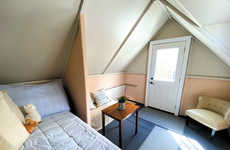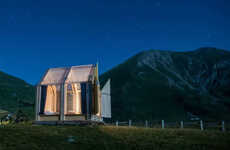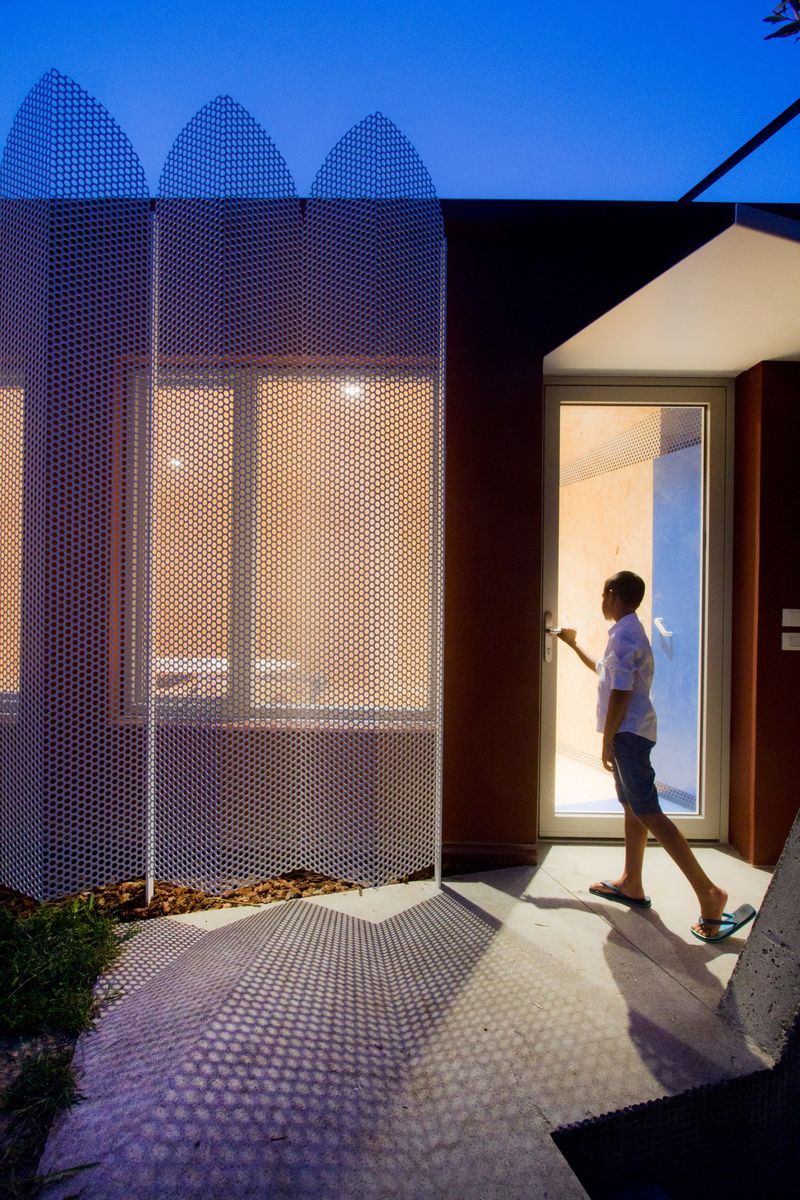
Francesca Perani Reimagines the Urban Cabin in Bergamo
Kalin Ned — April 6, 2020 — Art & Design
References: francescaperani & dezeen
The Urban Cabin takes the place of a porch of a house in Albino--this is one of the small towns in the Italian province of Bergamo. Architect Francesca Perani worked on the project, alongside interior designer Ilenia Perlotti. The two equipped the new space to serve as " a separate, self-contained residence that can be used for a number of purposes."
While the original purpose of the Urban Cabin was to deliver an extra workspace, a place for visiting guests to stay or something else, the COVID-19 pandemic has flipped its dynamic into a self-isolation space.
The stylish quarantine-friendly micro-apartment is equipped with plenty of storage space and is made to be architecturally playful with an open-plan and spacious layout, and interesting materials such as perforated metal.
Image Credit: Francesca Perani
While the original purpose of the Urban Cabin was to deliver an extra workspace, a place for visiting guests to stay or something else, the COVID-19 pandemic has flipped its dynamic into a self-isolation space.
The stylish quarantine-friendly micro-apartment is equipped with plenty of storage space and is made to be architecturally playful with an open-plan and spacious layout, and interesting materials such as perforated metal.
Image Credit: Francesca Perani
Trend Themes
1. Micro-apartments - The rise of self-isolation has led to an increase in demand for smaller, more affordable, yet creatively designed micro-apartments.
2. Self-isolation Spaces - In response to the pandemic, architects and designers are creating new self-isolation spaces that are stylish and functional.
3. Adaptive Reuse - The trend of adaptive reuse in architecture and interior design is bringing new life to small, unconventional spaces such as porches or garages, by transforming them into livable micro-apartments.
Industry Implications
1. Real Estate - The real estate industry can capitalize on the demand for smaller, more affordable micro-apartments.
2. Architecture and Interior Design - Architects and interior designers can embrace the trend of adaptive reuse to create unique and functional micro-apartments for self-isolation and beyond.
3. Construction and Materials - The construction and materials industry has the opportunity to innovate and develop new materials and designs that are both cost-effective and architecturally playful, to meet the growing demand for micro-apartments.
5.8
Score
Popularity
Activity
Freshness























